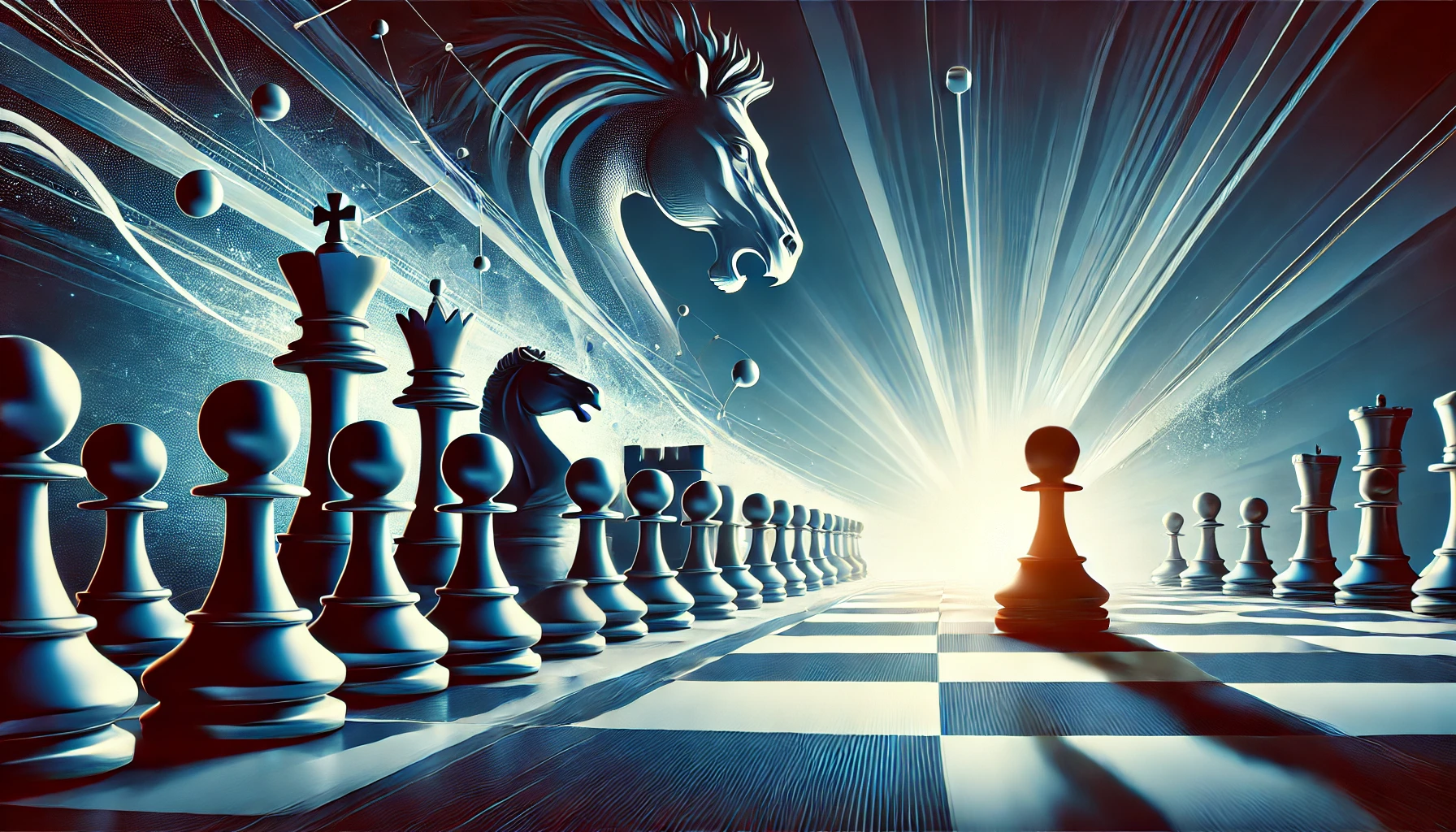Endgame for Beginners: Basic Principles
Introduction
The endgame is the final stage of a chess game, where victory is decided. Even the smallest advantage can be crucial here. Understanding the fundamentals of endgames helps convert draws into wins and turn complex positions into triumphs. In this article, we will explore the key principles, strategies, and common mistakes that every beginner chess player should know.
What Is the Endgame, and What Makes It Unique?
Key Characteristics:
♟️ Fewer pieces on the board – Simplified positions allow for a more focused strategy.
♟️ The king becomes an attacking piece – No longer just a protected piece, it plays an active role in the endgame.
♟️ Pawns take center stage – Their promotion to a queen becomes a top priority.
Example:
In the middlegame, the king remains hidden from attacks, but in the endgame, it actively controls key squares. A king on f5 supporting a pawn on g6 is a great illustration of this principle.

Fundamental Endgame Principles
1. An Active King
✔ Centralize the king – Move it from h1 to e4 to gain more control over the board.
2. Pawn Structures
✔ Create passed pawns – A pawn on d5 with no opponent pawns on its file is a strong asset.
✔ Avoid doubled pawns – Pawns on c3 and c4 can be easily blocked.
3. Control of Key Squares
✔ Opposition is crucial – When kings face each other with one square in between, the player to move loses ground.
✔ Example: White king on e5, Black king on e7 → White wins by advancing forward.
Common Beginner Mistakes
❌ Keeping the king passive – Delaying king activation leads to loss of tempo.
❌ Weak pawns – Advancing pawns without support creates weaknesses (e.g., an unprotected pawn on a4).
❌ Losing opposition – Giving up opposition means losing control of pawn endgames.
Winning Strategies in the Endgame
✔ Plan 3 moves ahead – If you have a pawn on f6 and a king on g5, calculate:
1. f7+ Kg7 2. Kf5 Kf8 3. Kg6 → The pawn promotes.
✔ King + Passed Pawn Technique – Move them together.
Example: White: Ke5, pawn on d5 | Black: Ke7 → White wins by taking the opposition.
✔ Endgame Theory – Memorize key positions, like winning king + pawn vs. king scenarios or how a queen stops a pawn on the second rank.
How to Improve Your Endgame Skills?
🔹 Solve pawn endgame puzzles – For example, “Win with the king on h3 and a pawn on h5.”
🔹 Analyze games by Kasparov or Carlsen on CHECKMAT – Notice how grandmasters activate their kings.
🔹 Use Stockfish to review complex positions – Example: Why is Kd6 stronger than Kf6?

Frequently Asked Questions (FAQ) – Endgame Basics
King Activity & Positioning
🟡 1. When should I activate my king?
➡ As soon as there are only 2-3 minor pieces left.
➡ Example: In rook + pawn vs. rook, the king must move forward immediately.
🟡 2. Where should I place my king in the endgame?
➡ Move your king toward the center for maximum control.
➡ Example: Ke4 is much stronger than Kh1.
🟡 3. Should I prioritize king safety in the endgame?
➡ No, the king is an attacking piece and should not hide like in the middlegame.
🟡 4. How do I use my king aggressively?
➡ Step forward and support pawn advances, aiming for opposition.
🟡 5. How do I checkmate with a king and a rook against a lone king?
➡ Push the opponent’s king to the edge and deliver checkmate with support from your king.
Pawn Play & Promotion
🟡 6. How can I avoid missing a winning move?
➡ Watch for pawn square rules to know if the king can stop a passed pawn.
➡ Example: If an opponent’s pawn is on b5 and your king is on e1, count the distance (4 squares).
🟡 7. What are passed pawns, and why are they important?
➡ A passed pawn has no enemy pawns blocking its path to promotion.
➡ Example: A pawn on d5 with no opposing pawns on c, d, or e-files is a strong asset.
🟡 8. Should I advance my pawns early in the endgame?
➡ Only if they are supported by your king or other pieces.
🟡 9. How do I promote a pawn safely?
➡ Use the king + pawn technique by keeping your king ahead of the pawn.
🟡 10. What should I do if my opponent has a passed pawn?
➡ Block it with your king or piece before it advances too far.
Piece Coordination & Strategy
🟡 11. How do I use opposition in king vs. king endgames?
➡ Place your king directly opposite the opponent’s king with one square in between.
➡ Example: Ke5 vs. Ke7, with White to move, ensures a winning position.
🟡 12. What is triangulation in king endgames?
➡ A maneuver to lose a tempo and force the opponent into zugzwang.
🟡 13. How can I avoid zugzwang?
➡ Keep multiple move options open to avoid being forced into a losing move.
🟡 14. What is the best way to use my knight in the endgame?
➡ Place it on outposts and near central squares to control key areas.
🟡 15. How should I use my bishop in the endgame?
➡ Keep it active on long diagonals and avoid locking it behind your pawns.
Common Mistakes to Avoid
🟡 16. What are the biggest mistakes beginners make in the endgame?
➡ Keeping the king passive instead of activating it early.
➡ Pushing pawns without support, creating weak structures.
🟡 17. How do I avoid losing tempo in pawn races?
➡ Move your king first before advancing pawns to gain key squares.
🟡 18. What should I do if I’m in a drawn position?
➡ Find fortress setups or aim for a threefold repetition if possible.
🟡 19. How do I checkmate with a king and bishop pair?
➡ Control key squares and use the king to force the opponent to the board’s edge.
🟡 20. How can I improve my endgame play?
➡ Solve endgame puzzles, analyze master games, and use engines like Stockfish for practice.
Mastering the endgame is the key to winning more games! Keep practicing and refining your technique. ♟🔥
Conclusion: The Endgame Is the Key to Success
Practicing the endgame can boost your chess rating by 20-30%. Solve puzzles on CHECKMAT, study classical endgames, and soon, victories will follow! ♟️🔥
